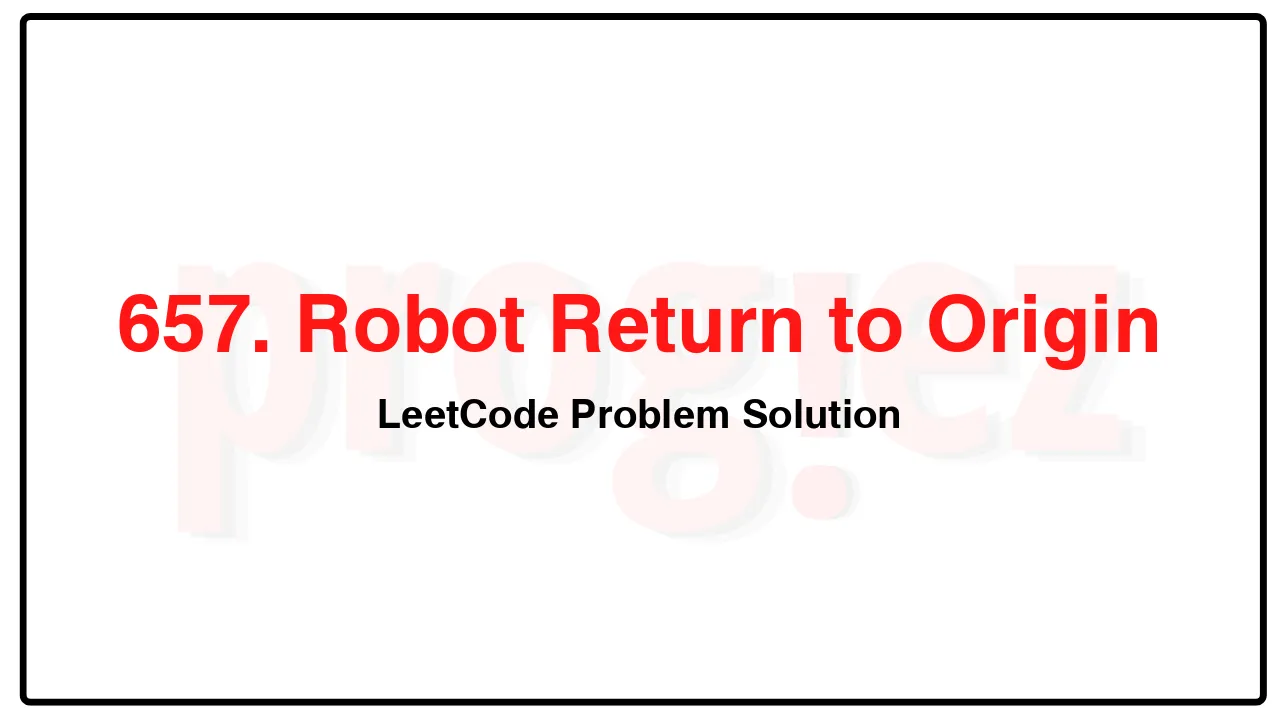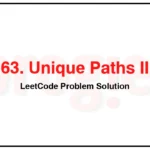657. Robot Return to Origin LeetCode Solution
In this guide, you will get 657. Robot Return to Origin LeetCode Solution with the best time and space complexity. The solution to Robot Return to Origin problem is provided in various programming languages like C++, Java, and Python. This will be helpful for you if you are preparing for placements, hackathons, interviews, or practice purposes. The solutions provided here are very easy to follow and include detailed explanations.
Table of Contents
- Problem Statement
- Complexity Analysis
- Robot Return to Origin solution in C++
- Robot Return to Origin solution in Java
- Robot Return to Origin solution in Python
- Additional Resources

Problem Statement of Robot Return to Origin
There is a robot starting at the position (0, 0), the origin, on a 2D plane. Given a sequence of its moves, judge if this robot ends up at (0, 0) after it completes its moves.
You are given a string moves that represents the move sequence of the robot where moves[i] represents its ith move. Valid moves are ‘R’ (right), ‘L’ (left), ‘U’ (up), and ‘D’ (down).
Return true if the robot returns to the origin after it finishes all of its moves, or false otherwise.
Note: The way that the robot is “facing” is irrelevant. ‘R’ will always make the robot move to the right once, ‘L’ will always make it move left, etc. Also, assume that the magnitude of the robot’s movement is the same for each move.
Example 1:
Input: moves = “UD”
Output: true
Explanation: The robot moves up once, and then down once. All moves have the same magnitude, so it ended up at the origin where it started. Therefore, we return true.
Example 2:
Input: moves = “LL”
Output: false
Explanation: The robot moves left twice. It ends up two “moves” to the left of the origin. We return false because it is not at the origin at the end of its moves.
Constraints:
1 <= moves.length <= 2 * 104
moves only contains the characters 'U', 'D', 'L' and 'R'.
Complexity Analysis
- Time Complexity:
- Space Complexity:
657. Robot Return to Origin LeetCode Solution in C++
class Solution {
public:
bool judgeCircle(string moves) {
int right = 0;
int up = 0;
for (const char move : moves) {
switch (move) {
case 'R':
++right;
break;
case 'L':
--right;
break;
case 'U':
++up;
break;
case 'D':
--up;
break;
}
}
return right == 0 && up == 0;
}
};
/* code provided by PROGIEZ */657. Robot Return to Origin LeetCode Solution in Java
class Solution {
public boolean judgeCircle(String moves) {
int right = 0;
int up = 0;
for (final char move : moves.toCharArray()) {
switch (move) {
case 'R':
++right;
break;
case 'L':
--right;
break;
case 'U':
++up;
break;
case 'D':
--up;
break;
}
}
return right == 0 && up == 0;
}
}
// code provided by PROGIEZ657. Robot Return to Origin LeetCode Solution in Python
class Solution:
def judgeCircle(self, moves: str) -> bool:
return moves.count('R') == moves.count('L') and moves.count('U') == moves.count('D')
# code by PROGIEZAdditional Resources
- Explore all LeetCode problem solutions at Progiez here
- Explore all problems on LeetCode website here
Happy Coding! Keep following PROGIEZ for more updates and solutions.









